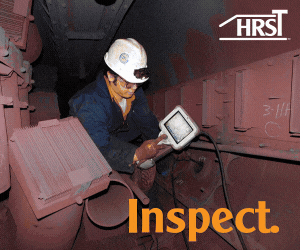You can spend a lot of quality time pointing fingers towards whom or what was to blame for the cold-weather issues experienced in several electricity markets—most notably Ercot—during February 2021. But no question, many gas-fired plants and their fuel suppliers were ill-prepared for the sustained cold weather. Lessons that may have been learned during previous cold-weather events over the last decade were either lost at some existing plants or not adopted at new ones.
Several industry presentations over the last six months focused on cold-weather prep and ops, and for good reason, changes are afoot. NERC has adopted a new reliability standard, EOP-011-2, which includes mandatory cold-weather prep plans, with specificity, and training to be provided to O&M staff (see accompanying article).
Some of the horror stories depicted during these user-group presentations included a plant in Nevada designed for 15F heat trace which experienced sustained ambient temperatures of -7F. Once the plant tripped because of a frozen transmitter, the rest of the plant froze up; it took a week, reportedly, to restart. Other horror stories are the plant that spent $100,000 on more robust transmitters and another which spent and additional $4.5-million to run in cold weather.
Woodbridge Energy Center has won CCJ Best Practices and Best of the Best Awards for the quality time staff invested in bolstering its heat tracing and cold-weather prep and ops; the word “inadequate” is probably charitable for describing the original heat-trace systems and other equipment the owner/operator found lacking during pre-commissioning and early operation. Get some of the details by reading the sidebar in the accompanying article, “Grid meltdown forces cold-weather prep to front burner,” based on information shared by users during a roundtable presented at the Combined Cycle Users Group (CCUG) 2021 virtual conference.
A manager at a plant CCJ visited in Kentucky said “cold weather is a pain in the ass.” Apparently, the design cold-weather points (wind, temperature) are for short duration. If they see 5F to 15F for multiple days, they have problems with insulation and heat tracing. Like Woodbridge, the plant had warranty issues with the EPC.
“We need a building!” the guy in Kentucky said. Woodbridge, in northern New Jersey and near the coast also was designed as an outdoor plant. A plant in Kansas, featured during the CCUG roundtable was described as “primarily an outdoor facility.” Most of the plants in Texas affected by the 2021 freeze undoubtedly are of outdoor design as well.
The questions nobody asked or volunteered in their presentations at these meetings are: (1) Why are plants in these locations being designed as outdoor facilities in the first place; (2) why are the ambient design conditions selected of such short duration, or not reflecting possible ambient conditions of temperature, wind speed, direction, and duration; and (3) why are these critical heat-trace systems being installed by local electrical contractors with little or no experience in this area?
Surely, someone with some financial smarts can see that the risk of one or two penalties from the ISO for non-performance during cold weather would more than pay for more robust systems. And surely many of us can speculate that the cost of complying with new NERC standards, which in itself doesn’t necessarily guarantee better cold-weather ops, could have paid for some gold-plated design margins of the kind electric utilities used to apply routinely to avoid these crises.
Revenue lost during cold-induced downtime could probably pay for a plant designed to run in Antarctica, regardless of what arguments the EPCs, banks, and project developers put up about additional capital expense, change orders, etc.
Granted, paying more for more robust design won’t solve all the cold-weather problems. It’s still easy for operators to neglect proper inspection and care upstream of winter, or these days simply not have the bandwidth with so few people on site. But better design surely is the place to start.
Utilities used to design for reliability. Today, the industry is designing for resiliency. Someone expressed the difference this way: Reliability is avoiding a punch, resiliency is the ability to take a punch and bounce back. What happened in Ercot is neither. But maybe a few hundred deaths from a statewide grid failure will cause us as an industry to go back to avoiding a punch with better design principles and margins, rather than wrestling with NERC over the wording in standards, new forms to fill out, guidelines to follow, and penalties to pay.





